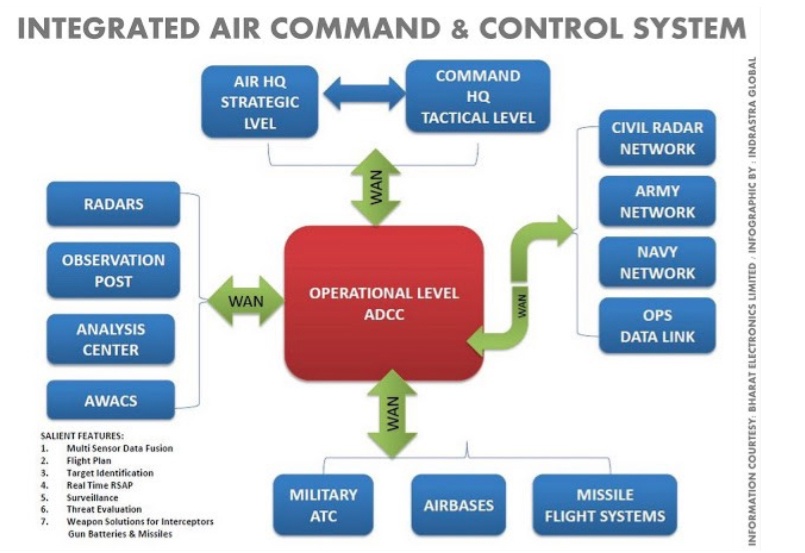
Air raid sirens blare! All India radio and emergency broadcast services broadcast reports of an attempted pre-emptive strike by Pakistan Air Force (PAF) squadrons on Indian airfields across the border. The air defence command springs into action, interceptor aircraft are scrambled and AAA guns and missile open up all along the border right from the Kashmir valley to the Arabian Sea, shooting down scores of incoming aircrafts with extreme prejudice and ruthlessness. The survivors are forced to head back home with their morale low and sinister objectives unachieved. This seems to be a fictional scenario, but in the years to come, this will be the new normal.
Introduction
In today’s constantly changing battlefield and geopolitical environment, the threat of war looms ever more seriously, never has the battlefield been as lethal and the stakes as higher as now. With advancements in aerospace technology and SEAD techniques becoming more effective, many speculate that wars will begin and end with decisive air campaigns.
It is therefore in the interest of any self-respecting and upcoming superpower to ensure that their airspace is always sanitised and they are capable of achieving air dominance while providing air defence cover to all its vulnerable assets. This involves a combination of passive and active measures to nullify or reduce the effectiveness of an enemy air attack. The air defence (AD) system has to detect, acquire, identify, intercept and destroy a target before it releases its payload or its desired effect is achieved.
The effectiveness of any air defence system is heavily dependent on short reaction time, reliable intel, early warning and continuous gap free surveillance. The system must provide a proportionate and layered response against a range of targets while simultaneously resisting possible countermeasures. It must also be capable of sustained operation despite absorbing considerable battle damage. Hence an independent, centralised and fully integrated air defence setup that utilises a tri-service organisational set-up to focus all its resources in a forward defensive posture denying the enemy any opportunity of incursion is the need of the hour.
Global Trend
A very basic air defense set-up for any self-important nation would normally consist of the following:-
- Fighting elements:Interceptor aircraft, naval ships, SAM systems (of the LR, SR, MR, VSR category), hybrid gun missile systems, AAA batteries, AI aided electronic warfare units and combat drones. (All ground based equipment to be preferably self-propelled)
- Surveillance equipment:AWACS/AEW aircraft, early warning radars (both active and passive, also not limited to Doppler and phased array radars and to include both civilian and military radar installations), mobile observation posts/ human intelligence, satellite imagery and data, and data from drones and other such platforms.
- Communication & decision support systems:Integration and networking software, AI-based decision and tracking support system, satellite-communication (sat-comm), very high and high frequency radio, optic fibre cable, army/ air force/ navy signals communication net and nationwide strategic communication net.
Nearly all global players recognise the importance of having clear skies above their own territory and the battlefield hence they have invested heavily in modernising and integrating their air defence systems to create a dense, mobile and impassable air defence envelope. The lessons of Kosovo, the Arab Israeli war, first and second Gulf war, and the more recent Op Zafran (Balakot airstrike), drone strike on the Saudi Armco refinery and the mortar, artillery and cruise missile barrages on military instillations in the West Asia and Afghanistan are not lost on them.
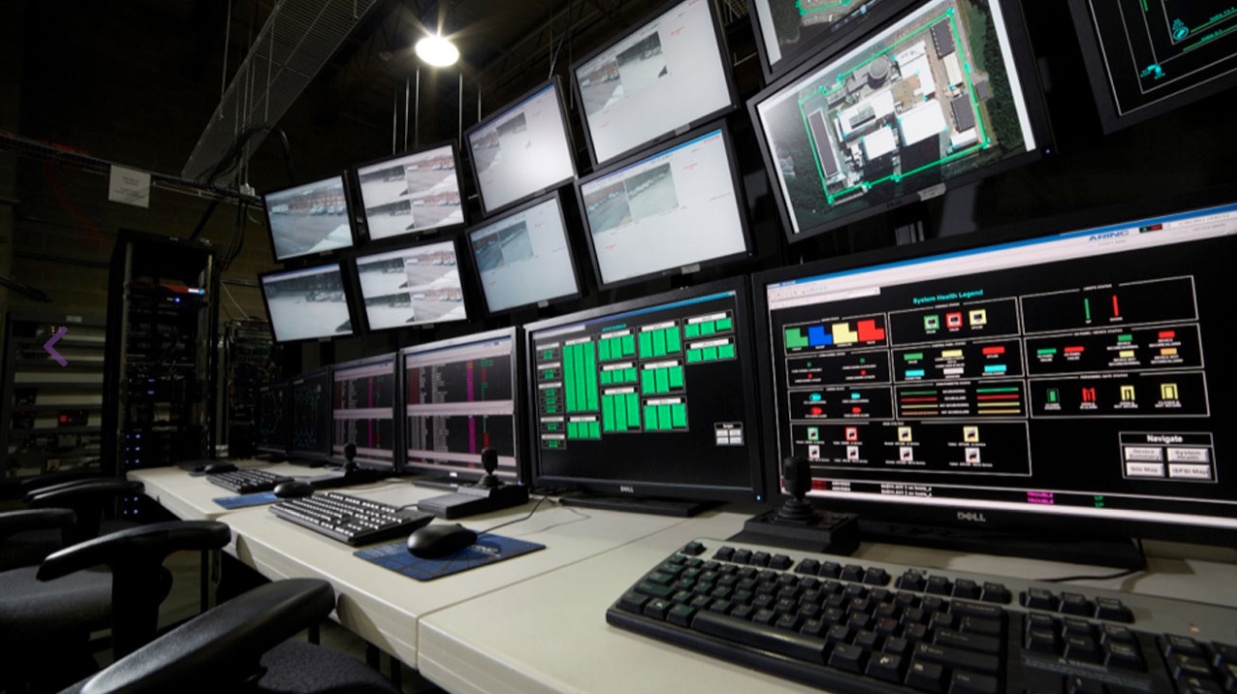
Few of the notable air defence systems that are used around the globe are:-
- Iron Dome:Iron dome is a mobile all-weather air defence system developed by Rafael Advanced Defense Systems (RADS) and Israel Aerospace Industries (IAI). The system is designed to intercept and destroy short-range rockets and artillery shells fired from distances of four kilometers to 70 kilometres away and whose trajectory would take them to an Israeli populated area. Israel hopes to increase the range of Iron Dome’s interceptions, from the current maximum of 70 kilometres to 250 kilometres and make it more versatile so that it could intercept rockets coming from two directions simultaneously. In addition to their land-based deployment, Iron Dome batteries will be deployed at sea in the future, where they will protect off-shore gas platforms in conjunction with Israel’s Barak 8 missile system. Iron Dome is part of a multi-tiered missile defence system that Israel is developing, which includes Arrow 2, Arrow 3, Iron Beam, Barak 8 and David’s Sling.
- NATINADS:The NATO Integrated Air Defence System is a command and control network combining radars and other facilities spread throughout the NATO alliance’s air defence forces. It formed in the mid-1950s and became operational in 1962 as NADGE. It has been constantly upgraded since its formation, notably with the integration of Airborne Early Warning aircraft. The United Kingdom and Germany maintained their own networks, but were fully integrated with the network since the introduction of the Linesman/Mediator network in the 1970s. The fighting elements of this setup are majorly, fighter aircraft. The tactical battle area is protected by SAMS, MANPADS and SPAAGS of all NATO members.
- Hughes and Siemens-integrated ad Control & Reporting (C&R) systems:Since its creation, Pakistan’s doctrines, strategies and policies have remained indo-centric and defensive in nature and scope. To this end, Pakistan’s ad setup came of age in late 80s when it contracted Hughes and Siemens to field; integrated AD Control & Reporting (C&R) systems. With little strategic depth, she had no option but to adopt a forward defence posture with all her AD resources. Pak AD is fully integrated, tri-service organisational setup and rated to be highly efficient.
Indian Air-Defence System
Each service has their individual air defence set-up and the execution of the air defence function is a core competency of each service. A brief overview of the current set-up is given below.
- Indian Army: The Corps of Army Air Defence (abbreviated as AAD) is an active corps of the Indian Army and a major combative formation tasked with air defence of the country from foreign threats. The AAD Corps is responsible for the protection of Indian air space from enemy aircraft and missiles, especially below 5,000 feet. It is responsible for providing AD cover over the constantly developing tactical battle area.
The Indian Army employs forward observers, mobile radar and tracking equipment, and a lethal mix of surface to air missile systems, anti-aircraft artillery guns (of the towed and self-propelled type), hybrid gun-missile systems, and very short range shoulder launched missiles.
- Indian Air Force: According to the union war book, Indian Air Force is responsible for the defence of national airspace, they engage all air threats above 5,000 feet. It is responsible for the protection of designated vital areas and vulnerable points all across India.
The service operates several squadrons of air superiority fighters, multirole fighters, fast interceptor aircraft, a small array of surface to air missiles (both static and mobile) and a few close in weapon system for terminal and point defence.
It employs airborne early warning aircrafts, a plethora of long-range high-resolution radar systems and medium range tracking radars in an integrated setup called the IACCS system to obtain a seamless picture over its battle space.
- Indian Navy:The Indian Navy maintains the capability to protect both its shore based and ship borne assets from aerial attack aircraft and munitions, they have a healthy mix of both CIWS systems and SAM batteries with built in redundancy mechanisms to ensure the survival of the vital assets.
Apart from operating SAMs and AAAs, the Navy also operates a dedicated air wing from both its airbases on the shores and aircraft carriers providing additional teeth to their air defence setup. Some ships have even undergone trials for mounting the ballistic missile defence capable missile systems.
New naval ships are being equipped with superior electronically scanned array radar systems, medium range and long range high resolution radars and integrated control and reporting systems for efficient operation.
It is observed that the three verticals of the armed forces maintain similar capability and equipment, and the same can and should be integrated on the lines of building a national air defence environment. At the same time each service should maintain the capability to protect its own airspace if the need be.
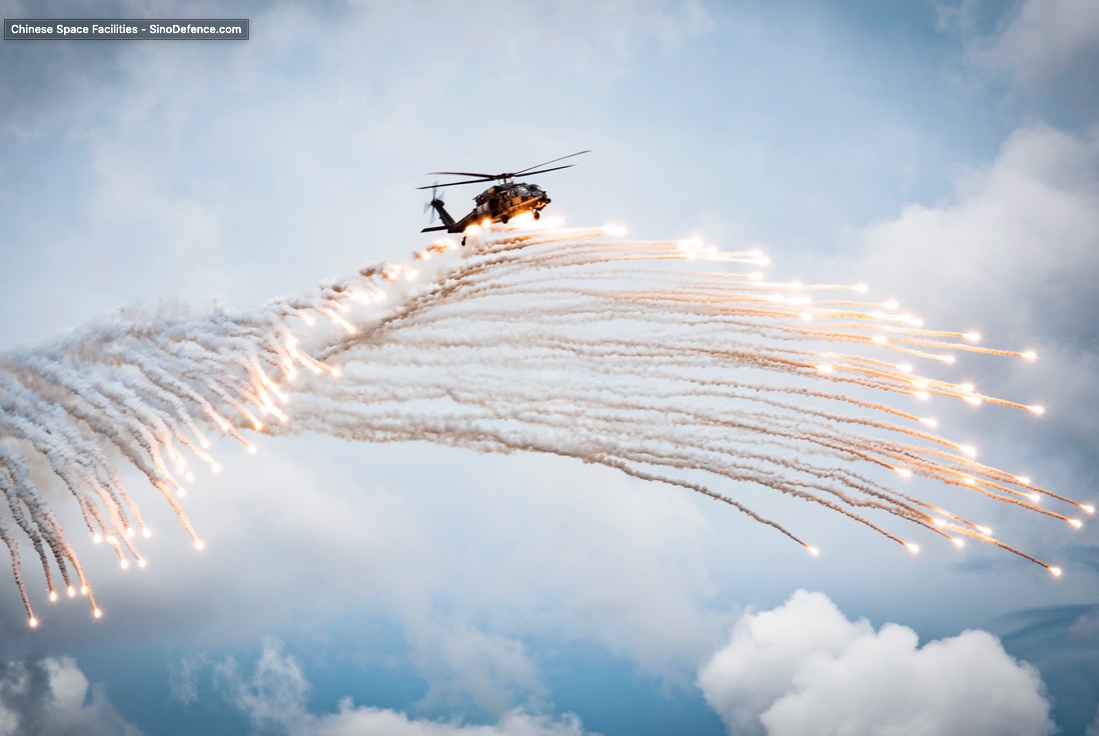
New Air Defence Philosophy
The air defence command should thus follow the following philosophy:-
- Centralised and integrated control of all AD resources i.e.
Weapon systems: Fighter aircraft, SAMs, AAAs, hybrid gun missile systems, CIWS systems, EW warfare equipment, MANPADS, a range of UAVs and energy based weapon systems.
Surveillance equipment: AWACS, early warning elements, mobile observation posts and human intelligence, satellite input, long-endurance border patrolling UAVs and UGVs and radars both civilian and military (to include, and not limited to, Active, Passive, Phased, pulse Doppler, electronically scanned array radars, etc.)
Control Centres: Node based control and reporting centres for example, IACCS, Akash Teer etc.
Communication centres: sat comm, radio comm (hf, vhf, uhf, and troposcatter etc.), optic fibre cable, army signal communication network, air-force network, data linkages, etc.
Decision making and tracking support systems: AI assisted systems to track multiple threats, asses their damage potential. Capable of prioritising air threat targets and cancelling parallax from multiple detection sources. Should provide IFF, weapon target matching, allocation of target to suitable platform(s) and aiding local commander in post-strike damage assessment and logistical/ inventory support.
- Concept of area defence or sector based defence with overlapping AD cover and layered response capability while maintaining dense AD cover.
- Maintaining air superiority over own and ever expanding battle field. Maintaining air dominance over hostile territory.
- Air Force fighters and interceptors to be primary weapons; LR SAMs, MR SAMs, UAVs to be secondary weapons; SR SAMs, gun missile hybrid systems, AAAs, CIWS and MANPADS to be used in anti-drone role, terminal defence, against low flying objects and protection of TBA and other assets; EW warfare and AI aided units to wreak havoc and confusion behind enemy lines and across their lines of communication.
- Air defence environment to be dense and impenetrable, forward defense posturing should be practiced and near gap free surveillance to be maintained using UAVs and other assets.
- VAs and VPs to be updated in a manner that they encompass and prioritise national and service asset vulnerabilities. Vulnerabilities of the national assets to take priority over vulnerabilities of service assets.
- A three dimensional view of the national airspace should be available to all commanders and operators, systems in place should include detecting, tracking and mapping all air traffic (to include civilian aircraft) in own and hostile airspace with the means for interrogation, intervention and interdiction in a predetermined and semi-automated manner.
- New training and integration infrastructure should come up to ensure tri-service training. A national character and identity should be imparted to air defence.
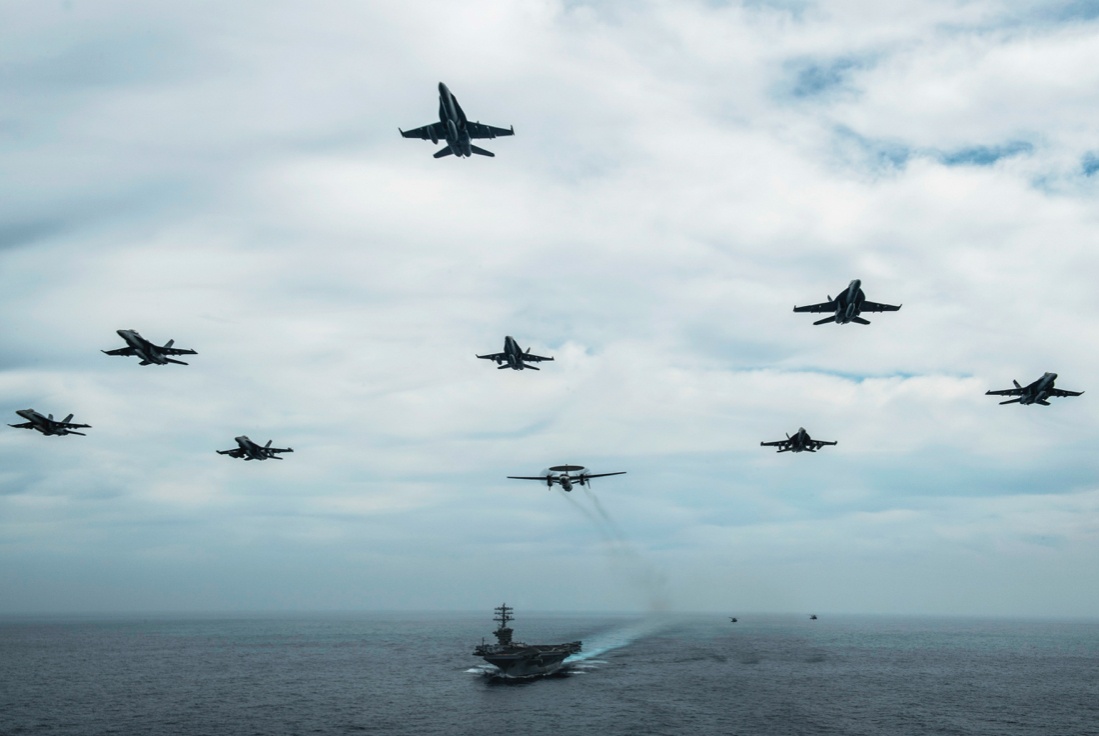
New Air Defence Structure
The organisational structure will be as follows, to be jointly staffed by officers and personnel from the army, navy and air force.
- Independent air defence command headquarters: At the national level, they are further subdivided into sector air defence commands. They have access to the big picture, i.e. the national air defence network.
- Integrated Theatre/ Sector air defence commands: These are assigned specific to areas/ sectors all along the IB. They control tri-service air defence assets within their specific sector. They are subdivided into two verticals, the sector operational command and the Operational Command Centre. They are linked to the national air defence network through a secure data link.
- Sector operational command: The first vertical is the sector operational command. This is the eyes and ears of the system. It will be in charge of early warning, detection, tracking, prioritising, parallax correction, mapping and IFF tagging of all air traffic in its respective sector. It will control the operation of the communication equipment, AWACS, AEW, MOUs, radars, sensor feed from WPN systems, CRCs, observation and patrol UAVs/ UGVs and communication nodes of all the three services related to its sector.\
- Operation command centre: The second vertical is the operation command centre. This is the teeth of the system. It assumes objective control over all hard and soft kill measures of the various Air Defence platforms of all the three services within its sector. Exercises operational control over all AD weapon platforms and on priority of threat basis.
SOCs and OCCs are deployed all along IB to provide near seamless AD cover, they are deployed in an aggressive forward defensive posture and on the basis of threat perception and asset protection. They are to cover maximum area and provide overlapping fields of fire giving a layered and tiered response to incoming air threat.
All three services to use their air defence assets and fighting units to perform designated tasks, i.e. the core competency of providing AD cover to their own vulnerable assets is to be maintained. The sector air defence command is to call out targets beyond the scope of individual fighting units on priority basis. Threats called out by the sector air defence command to take priority over the threats perceived by individual fighting units. The sector air defence command also exercises objective control over all assets in its sector.
Majority of the equipment to be mobile or semi mobile to advance with the tactical battle area, dense overlapping and impenetrable air defence umbrella to be created along the entire battle frontage to actively deny and destroy enemy air threat.
SOCs and OCCs to be assisted by AI systems in situational awareness, decision making, threat perception, weapon target matching, IFF, parallax cancellation, platform matching and anti-SEAD operations. They are to be linked to each other and the national air defence network via secure data link with built in redundancy.
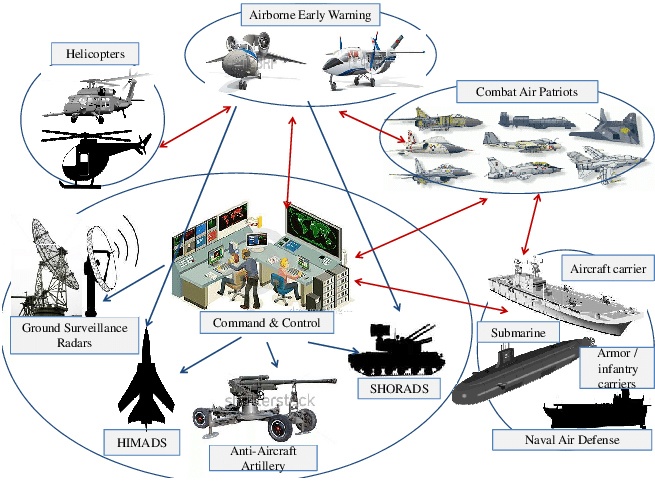
Components of Air Defence Structure
Each individual service has its unique systems in place for various air defence related roles, only by integrating and optimising their use can the maximum efficiency be achieved. Components are to be grouped according to their role.
- Mobile observation units:Army, air force and navy mobile and forward observation squads are the first line of sensors in the air defence C&R chain. They feed the data from the sightings directly into the Air Defence command chain. Their function can be augmented by the use of long range, high endurance, remotely piloted/ autonomous UAVs and UGVs, equipped with advanced sensors (pressure and acoustics sensitive, Electro optical and thermal sensitive, EM wave sensitive, etc.) apart from radar sensors to provide reliable early warning and detection data.
- Medium range radars: This category of radars may include military and civilian radars and are deployed in chain formation all along the IB to provide a seamless multilayered, overlapping radar cover along the entire battle frontage. These may be self-propelled or semi mobile and are low level air control system and national air defense network compatible.
- Long range/ surveillance radars: These systems detect hostile threats at long ranges and evaluate their threat potential, guide appropriate response, and warn other air defence systems for acquiring the threat to mitigate a more precise counter to the threat. Their coverage is deep into enemy territory.
- Airborne early warning and control: They have optimal range and are highly mobile. They are also capable of detecting and identifying the type of aircraft and the weapons it is carrying. The AWACS is connected by data link to the air defence command, sector commands and sector operation commands as well as other combat assets.
- Low level air control system:This system is primarily designed to counter air attacks by providing a timely response based on early and reliable detection, computerised data processing and secure communications for transfer of information. The system is a linkage between the radars and the SOCs by the use of CRCs. The low looking medium range radars along the IB relay the data to the Control and Reporting Centres which receive and process the data in real time and relay it via secure data link to the SOCs. Each CRC can be linked to multiple radars.
- Air defence environment system: It is a system that is interfaced with the low level air control system. It provides all commanders with an up to date real time air picture and provides computerised evaluation of multiple threats and available options for engagement.
- Air defence weapons:As stated earlier, Air force fighters and interceptors to be primary weapons; LR SAMs, MR SAMs, UAVs to be secondary weapons; SR SAMs, gun missile hybrid systems, AAAs, CIWS and MANPADS to be used in anti-drone role, terminal defence, against low flying objects and protection of TBA and other assets; EW warfare and AI aided units to wreak havoc and confusion behind enemy lines and across their lines of communication.
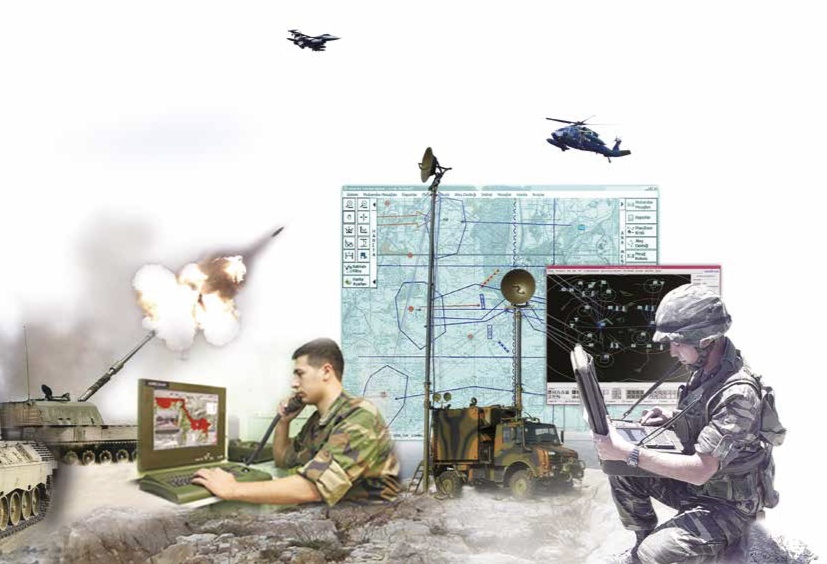
Advantages of Air Defence Command
- Centralised command and control apparatus with built in redundancy.
- Clear national air defence picture available to all local commanders.
- Layered and tiered response by multiple assets simultaneously.
- Anti-aircraft fire comes from unexpected positions and is usually ungraduated and unpredictable.
- Both soft kill and hard kill measures are available.
- Optimisation of resources and ammunition.
- Increased anti SEAD capability survivability and concealment of most of the air defence assets.
- Faster response time and lesser stress levels.
- Hit probability multiplies against a range of air threats.
- Gap free air defence cover provided along the entire battle front and dense AD cover in respective sectors.
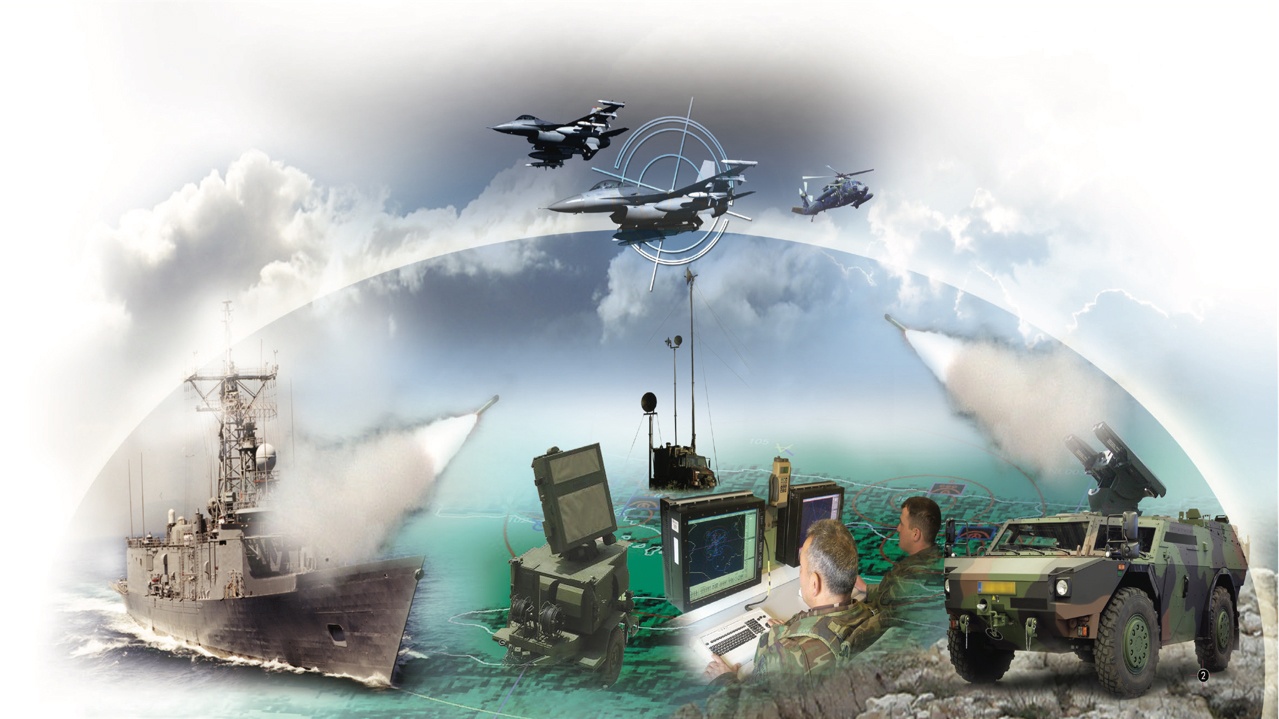
The Way Ahead (Recommendations)
- A special emphasis will have to be on providing reliable and detailed early warning. Use of new technology and patrolling UAVs with advanced sensors and long endurance is recommended.
- A national air defence network will have to be created and the three services will be connected to it. The national air defence picture will be available across all levels of command and control.
- Old and legacy AD equipment to be modernised as a stop gap measure until new equipment is procured. Development of soft and hard kill measures to be pursued.
- Standardised new equipment to be procured in a manner so that all three services have same/ similar platforms for ease of operation, logistics and training. There should be cross service compatibility, and most importantly all three should follow same AD philosophy.
- Fighters, UAVs, Long range and medium range SAMs are the most effective option for centralised deployment and maximum coverage.
- Hybrid gun missile systems, CIWS systems, MANPADS and VHSORADS to be provided for point defence and protection of advancing armies and fighting formations.
- AI, combat drone and electronic warfare units to be trained and inducted at AD brigade level and should be used for anti SEAD ops and for maximum effect against the enemy.
- New training and integration infrastructure should come up to ensure tri-service training, joint staffing to further increase co-operability and to give air defence a national character and identity.
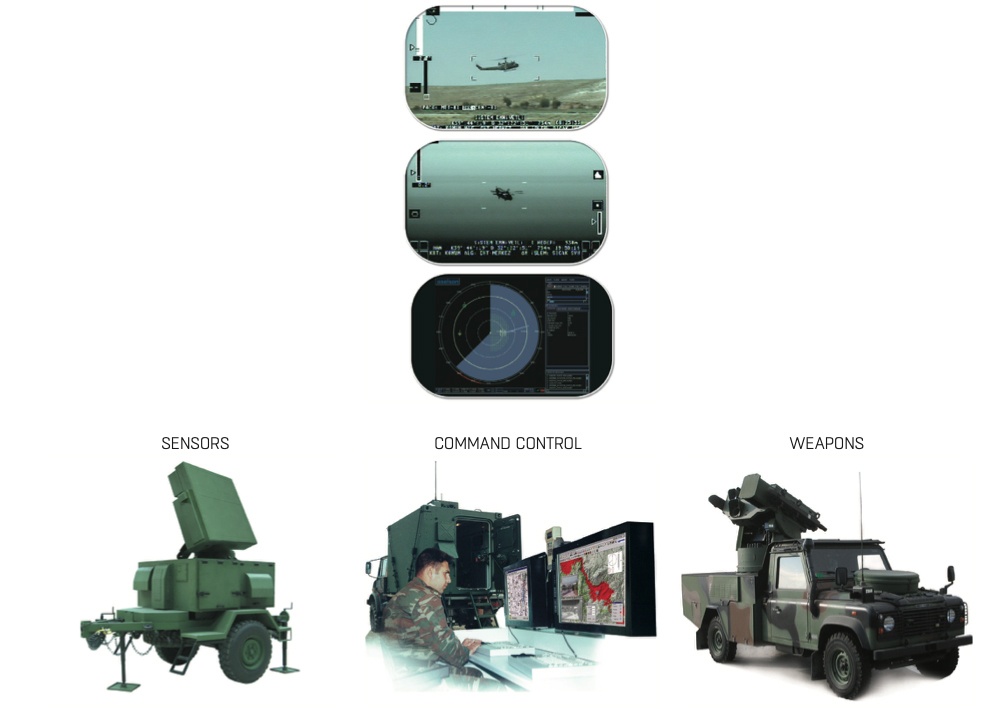
Conclusion
To conclude, any country that realises the importance of air defence in the changing scenario will gauge the threat posed by the enemy air attacks and establish an independent air defence command that exercises control over all AD assets. Its role will be, but not limited to, coordination, training and induction of new air defence platforms. The operational command may be kept centralised or can be delegated to operational or sector commands and local commanders. Flexibility and adaptability would be key to its operation.
The resultant national air defence network will provide a nearly real time composite national air defence picture at all levels of command and control. It would have a diverse range of detection/ acquisition means and platforms. It would provide a dense air defence cover at sector level and will reduce the cases of confusion and fratricide. Integration and judicious use of national air defence assets under the air defence command would be crucial for protecting maximum number VAs and VPs, keeping the battlefield sanitised and sustaining a high attrition rate onto the hostile air force.
-The writer is a mechanical engineer and an alumnus of Manipal University, Jaipur. He has keen interest in all things military, is an avid reader and an aspiring defence analyst








